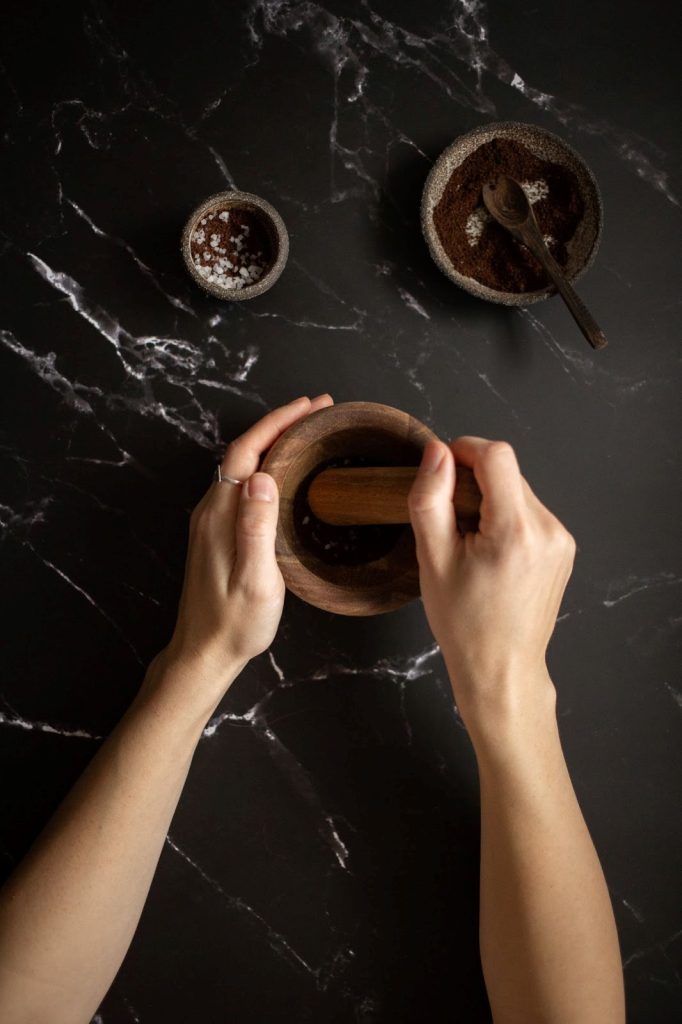From the fertile hills of Tanah Batak, North Sumatra, flows the legendary delicacy of Sidikalang coffee. Processed with distinctive techniques and influenced by the hot climate of its native region, Sidikalang coffee captivates coffee connoisseurs around the world with its unique flavor.
In this article, we will dive into the specialty of Sidikalang coffee, reviewing its origins, characteristics, and the steps in its processing. Let’s see more!
Region of Origin Sidikalang Coffee
Sidikalang coffee comes from the Sidikalang area of Dairi, North Sumatra. This area includes the sub-district as well as the capital of Dairi Regency with a total area of 70.67 km2.
Kecamatan Sidikalang is located at an altitude of between 700 to 1,100 meters above sea level (masl), with a tropical climate, and very fertile soil.
These geographical factors play an important role in creating high-quality coffee. In this ideal environment, coffee trees can grow well and produce coffee beans that are rich in flavor and aroma.
Farmers in Sidikalang cultivate two types of coffee plants, robusta and arabica. Robusta coffee can grow at an altitude of 600 – 700 meters above sea level, while Arabica coffee requires a minimum altitude of above 1,000 meters above sea level.
Taste and Aroma of Sidikalang Coffee
Robusta and Arabica coffee from Sidikalang have different characteristics. Robusta coffee has a higher caffeine content (70-80%) and a stronger flavor than Arabica coffee. Robusta coffee also tends to be rougher in texture.
Sidikalang Coffee provides a coffee experience with a touch of chocolate-like flavor and a hint of sweetness. The aroma smells of spices that are not too sharp. Another unique feature is that this coffee is known to be stomach-friendly as it has low acidity.
One interesting thing about Sidikalang coffee is its ‘long aftertaste’ that lasts for a long time, leaving a coffee flavor that is still felt in the mouth and throat after drinking.
Sidikalang Coffee Processing
To create high-quality coffee, the processing of Sidikalang coffee requires a meticulous process that involves several important steps. The following are the stages in processing the coffee beans:
Selection and Selection of Coffee Beans
Harvested cherry coffee beans should have a dominant red color, at least about 95% of the beans are red. The coffee cherry beans are then sorted by soaking. Seeds that sink when soaked indicate good quality and are ready for the next stage.
Separation and Drying of Coffee Beans
After the selection process, less than 24 hours after harvesting, the coffee beans are ground using a grinding machine to separate the skin from the coffee grain. The coffee beans that have been separated from the skin are then dried in the sun without washing first.
The drying method uses para-para equipped with a transparent plastic lid to aid in the drying of the coffee beans. This process lasts until the moisture content in the grain coffee beans reaches about 15%.
Hornskin Separation
When the coffee beans have reached a moisture content of about 15%, thehull is separated from the beans using ahuller. The result of this process isgreen bean coffee that is ready for the next stage.
Roasting Process
Rice bean coffee that has been prepared is then roasted using a drum-shaped medium made of iron plate, using firewood or gas fuel. The duration of the roasting process varies, depending on consumer demand or the standards set by coffee roasters.
Milling and Screening
After finishing roasting, the coffee beans are cooled for about 30 minutes before being ground into powder using a coffee grinding machine. The fineness of ground coffee is adjusted according to consumer preferences or the standards desired by ground coffee manufacturers.
Government Strategies in Promoting Sidikalang Coffee
Sidikalang Coffee, especially the robusta variety, once had a golden age with very favorable prices for farmers. However, in the late 1990s, its popularity declined drastically due to pest attacks that overwhelmed farmers.
To revive the prestige of Sidikalang coffee in the market, the Dairi Regency Government is taking strategic steps. In 2019, the government successfully obtained a Geographical Indication (GI) Certificate for Sidikalang Coffee from the Directorate General of Intellectual Property of the Ministry of Law and Human Rights.
Other strategic measures include conducting a coffee intensification program, with the provision of agricultural production facilities such as fertilizers, pesticides, and agricultural machinery (alsintan).
In addition, the coffee extensification program is carried out by providing assistance and training for coffee farmers to expand their knowledge and skills in sustainable coffee cultivation.
Not to forget, the government established robusta coffee production centers in several areas such as Berampu, Lae Parira, Siempat Nempu, Pegagan Hilir, Silima Pungga-Pungga, and Siempat Nempu Hilir. Meanwhile, arabica coffee centers are located in Sitinjo, Sumbul, Sidikalang, Parbuluan, Siempat Nempu Hulu, and Pegagan Hilir sub-districts.
The success of these various efforts is reflected in the coverage of coffee planting area in 2022 reaching 1,756.64 Ha. In 2023, there is an additional land expansion of 100 ha for arabica coffee, with details of 20 ha in Gunung Sitember sub-district, 30 ha in Parbuluan sub-district, 30 ha in Pegagan Hilir sub-district, and 20 ha in Sidikalang sub-district.
Such is the distinction of Sidikalang Coffee as an alluring flavor legend from Sumatra. Carefully selected from quality cherry coffee beans and processed through a series of stages, it produces a coffee with a distinctive aroma that cannot be ignored. Let’s discover the pleasure of a cup of coffee for ourselves!
Are you a coffee lover? It’s time to visit the KopiKita platform to find coffee from various regions in Indonesia at the best price.









